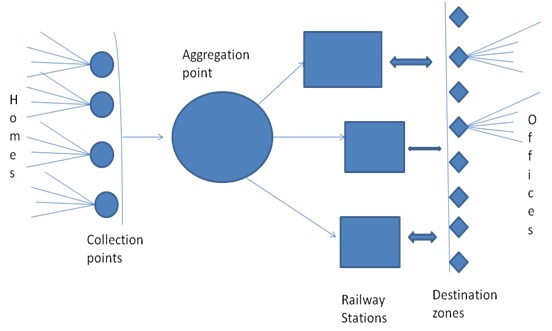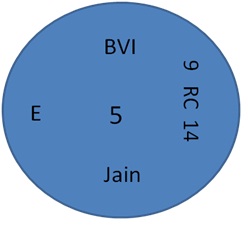After the first week's class of Supply Chain Management, one question that was raised in the class the render me a lot of thinkings, that is, when applying new technology in supply chain management is rather expensive and risky, why new business still invest a great amount of money and puts a lot of effort in the implementation of information infrastructure.


In fact, an effective supply chain management may have diverse forms, with or without technology. One obvious example is the Dabbawala System which shows up in Mumbai, India. In the case study of Dabbawala System, it simply illustrates the fact that why Dabbawala is so effective and popular in Mumbai, what methods they are using to render it a good supply chain system. Now, I am trying to summarize the key fact as well analyze the effect of this system from a global view.
First, let's have a glance at how the model of Dabbawala system looks like:

Source: http://www.mbaskool.com/business-articles/operations/2891-dabbawalas-unique-supply-chain-model.html
Firstly, the dabbawala system covers a wide range of homes (sources) and offices (destination), the deliverers will pick up their dabbas in the morning, and deliver it to the office in a certain time. Apparently, this delivery model required a lot of labors for pick-up and delivery to achieve its competative advantages in cost. Based on the fact that the delivery fee must not be beyond the value of dabbas (Actually it is very cheap), the labor cost must be maintain in very low level, indicating that in this area, there must be enough labor resource who are willing to accept relatively low salary. Since those who are willing to accept this job are from low-income family, and may not be able to receive higher education, this generates another questions that how they can maintain such a loyalty in delivery even they may not be well-educated. In the case study demonstrate that besides the religous reason, there are also strict rules and criteria to be followed by the staff within dabbawala system, otherwise serious punishment will be applied, which may affect the income for a whole family. But from the organization's aspect, they can just simply replace it with another person. Therefore, this supply chain system is only suitable for areas with a high gap between rich and poor.
Secondly, a special code is used to identify the information of delivering goods. It has only five simply strings and is painted in the case of the dabbas. Because most of the families are using the same case for a dabba (no one are willing to buy thousands of cases for a dabba), it implies the source and destination are almost certain within a range of time for a specific familym. In other words, the demand and supply for a specific area are almost stable in a month, and this is, in my opinion, also one of the key factors why dabbawla is so successful even without implementation of technology. But from another aspect, this system is destined to be limited in a small area. Besides, since the coding system is simple, on one hand, it is esay to manipulate the delivery process. On the other hand, it is only suitable for a small area and also a waste of information. (Amazon, as well as Alibaba is a good example of making use of information derived from the supply chain, and I will discuss it later)

Source: http://www.mbaskool.com/business-articles/operations/2891-dabbawalas-unique-supply-chain-model.html
Last but not the least, the delivery system heavily depends on the train network inside Mumbai area. To reduce transportation cost, a huge amount of goods must be delivery at one time. Therefore, the business model for dabbawala must focus on Central Business District and not reach to the far-away destination. In other words, it is good for small area delivery with high density of population and cheap transportation network. Personally, I don't think any other cities or places around the world are able to satisfy this requirements.
Obviously, Dabbawala system is developed from a push view, to response to a quite stable customer order by making use of low-cost labor, cheap but convenient transportation network, and strict rules combined with religious wills. However, as the society is developing, labor and transportation will become the major component of cost in supply chain management, as well people are in favor of freedom will and actions. At that time, the system will fail if it simply ignore the great impact from technology innovation.
Next blog i am trying to discuss how technology innovate supply chain management in practice. Let's wait and see.
No comments:
Post a Comment
Note: Only a member of this blog may post a comment.